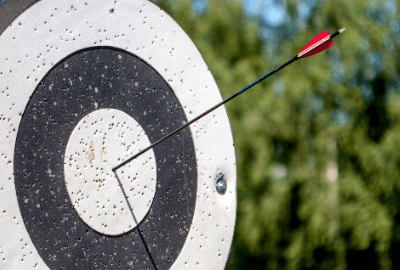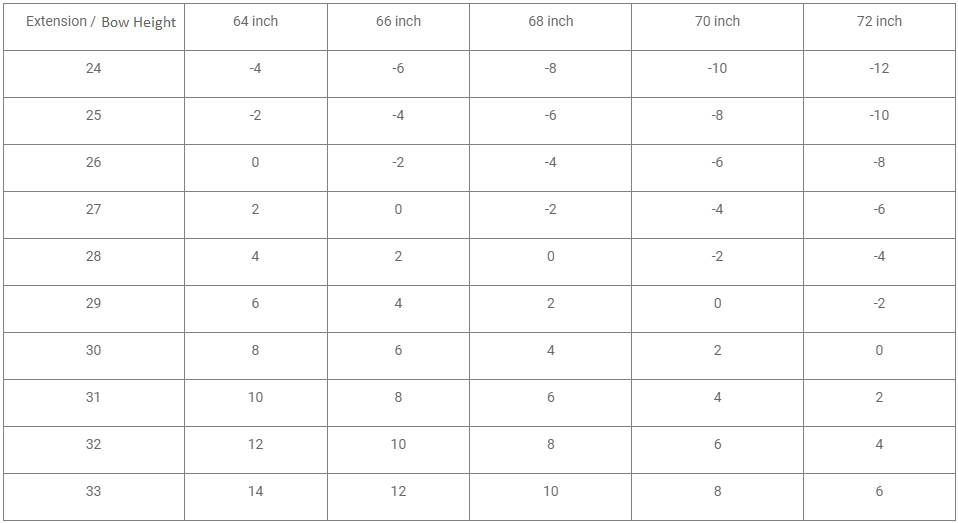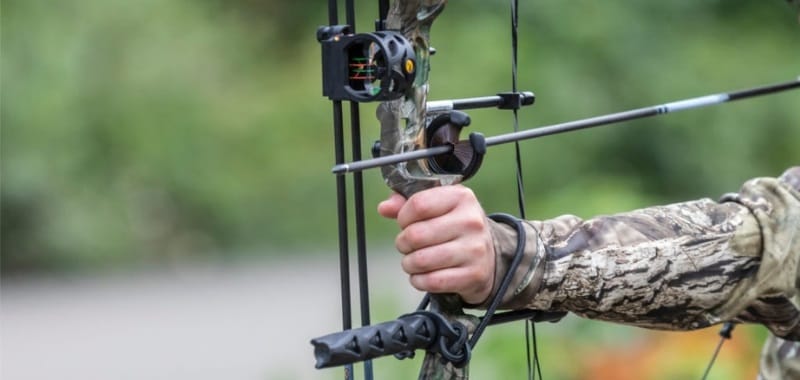Modern bows boast increasingly sophisticated technology, enabling seamless transitions from indoor target shooting to 3D hunting. However, all this innovation is meaningless without the right arrows to complement your bow. Choosing the perfect arrow is a complex challenge, especially for newcomers to archery or bowhunting. It’s a crucial step that many overlook, but understanding this can improve your shooting experience to new heights!
Whether you’re an aspiring archer, a seasoned marksman, or just curious about the sport, grasping how to choose the right bow and arrow is crucial. The journey of finding your perfect setup involves balancing personal preferences, skill level, and intended use. By exploring the different aspects of this ancient yet ever-relevant practice, you’ll gain the insights necessary to make good decisions.
The Different Parts of an Arrow
A bow arrow consists of several distinct parts, each with its own specific characteristics. Beginners often benefit from pre-assembled arrows for ease of use, while experienced and professional shooters may prefer to customize their arrows by handpicking each component. Understanding the four key parts of an arrow is essential, as these differences significantly influence your shot’s overall performance. This knowledge enables you to make choices that enhance your accuracy and consistency on the range or in the field.
- Nock: The nock is located at the rear end of the arrow and fits onto the bowstring during shooting. Typically made from durable plastic, it channels energy from the string to the arrow upon release. When selecting a nock, ensure it’s robust and resistant to breakage.
- Feathers: Feathers serve as stabilizers, with three affixed to the shaft to improve the arrow’s flight stability. They can be made from natural or synthetic materials, often sharing a similar shape, although some variations exist.
- Tube and Shaft: The arrow’s tube is its main body, allowing for customization with other components based on your preferences. There are four primary materials: wood, aluminum, carbon, and a combination of aluminum and carbon.
- Point: The point is crucial for penetrating the target. It is located at the front end. Choose a point that suits your specific archery practice; for example, a hunter will need a different point than an archer focused on indoor shooting practice.

Final Thoughts
The selection of the point, feathers, and nock depends heavily on your specific archery discipline. The arrow’s performance is significantly impacted by its power, which is influenced by several factors, including overall weight, shaft length, and the environmental conditions in which you plan to shoot. Once you understand these things and how they work together to optimize your shot, you can leverage metrics and charts to identify the ideal setup for your needs.
Bow Arrow Buying Guide
Now you know the arrow and its different parts, let’s take a look at the important criteria to consider when buying the best bow arrow.
Purpose of use
The purpose of arrows varies significantly based on their intended use, making it crucial to consider how you plan to shoot. Just as with any sports equipment, the choice of each arrow accessory is dependent on the user. While standard equipment can accommodate a wide range of archers, each individual brings unique body types and strength levels to the practice.
Length of the arrow
Length is the most critical factor when selecting a compound bow arrow, as it must be tailored to your specific draw length. To determine the ideal arrow length accurately, you need to be familiar with the relevant measurements discussed in the power section below. When deciding how long to cut your arrow shafts, remember to add 2 inches to your calculated length. This extra length accounts for the portion of the arrow that extends beyond the rest, ensuring optimal performance and safety during shooting.
Weight of the point and the final arrow
Another crucial factor to consider is the arrow’s weight, measured in grains (GPI for Grains Per Inch) rather than grams. Although a heavier arrow can reduce speed, it delivers greater impact on the target—an essential consideration for hunters. Thus, adjusting arrow weight based on your specific practice is vital.
However, simply increasing weight doesn’t guarantee more power. Finding the right balance is key; an imbalance can negatively affect your performance, reducing speed and precision. Typically, tip weights range from 100 to 125 grains, which helps shift the center of gravity forward, allowing the arrow’s tail to perform effectively while keeping the shaft flexible.
Tube diameter
Knowing the diameter of your arrow tube is essential for customizing it with specific components. Various diameters are available on the market, depending on the materials and brands used. However, it’s important to note that the diameter has minimal impact on the arrow’s overall performance.
Power of your bow
The power of your bow is an important parameter to consider before buying an arrow set. It allows us to define the ideal spine. You can find this value on the limbs of your bow. It is also calculated according to your bow draw weight. Refer to the power marked on the limbs and the following table Add or subtract the number of pounds indicated to the power marked on the branches to find the power drawn at your draw.

After determining the draw length and arrow weight, the next step is to select the spine of the arrow.
Stiffness of arrow tube
The spine of an arrow indicates its stiffness, reflecting the tube’s ability to flex under weight applied in the middle. Spine ratings typically range from 800 (softest) to 250 (hardest), with higher numbers indicating more flexibility. However, Easton aluminum tubes differ from this standard, where a higher number denotes greater rigidity. It’s important to remember that each manufacturer has unique measurements and specifications.
Tube material
- Aluminum tube: The invention of aluminum arrows in the early 1940s revolutionized the practice of archery. They are more expensive than wood and fiberglass arrows. They are also low-resistant to moisture and make the arrows durable and flexible. Manufacturers of aluminum arrows can adorn them with custom colors and patterns. When aluminum arrows collide with other arrows, they tend to bend due to the material’s malleability. This vulnerability can affect their performance and longevity.
- Carbon fiber tube: Carbon arrows are more resistant and allow great precision of shooting while flying relatively straight. They can also be woven to make them compact without splitting after being hit by other arrows. Carbon is a popular choice for many archers and bow hunters. Their durability is ensured by resistant materials. However, they tend to fray with time and wear.
- Hybrid tube: Lightweight hybrid designs appeared after many years of using arrows with simple composite materials. New arrows are made of carbon and coated with aluminum. The strength of the carbon fiber of the aluminum makes them very popular with experienced archers. In general, hybrid arrows are lightweight and have high kinetic energy transfer.
- Wooden tube: Wood was used to make the first-generation models. This simple and inexpensive arrow is the ancestor of the arrow, it is the one you can see in all adventure and history movies. Wooden arrows are more likely to break but are not obsolete. However, they are still used by longbow hunters and traditional archers. It is now rarely available in modern compound bows or advanced crossbows that fit wooden arrows.
The price
The introduction of high-quality bows has driven up prices in the market. Therefore, price is an essential factor to consider before investing in a set of arrows. Arrow packages typically range from $5 to $100. To ensure optimal performance and protect your investment, it’s advisable to use a quality quiver for transporting your arrows. This will prevent any potential damage.
Conclusion
The power of your bow directly influences the rigidity of the arrow you should select. For a powerful bow, a very rigid arrow with a spine of 400 is recommended, while a softer arrow with a lower spine is better suited for a weaker bow. Regardless of your shooting distance, arrows can be lethal, so it’s crucial to follow basic safety guidelines and ensure that no one is within the shooting range.
I hope this guide has helped you gain a comprehensive understanding of bow arrows. If you have any questions or feel that additional information is needed, please leave a comment below!
Frequently Asked Questions (FAQs)
What are the main types of bows, and how do they differ?
Bows come in various types, including recurve, compound, and longbow. Recurve bows have tips that curve away from the archer, compound bows use a system of pulleys for added power, and longbows are known for their simplicity and traditional design. Each type caters to different preferences, purposes, and skill levels.
Is it essential to consider bow length when choosing a bow?
Bow length is significant for factors like maneuverability and stability. Short bows are more maneuverable but may sacrifice stability, while longer bows offer stability at the expense of some maneuverability. The ideal length depends on your shooting style, purpose, and comfort.
How crucial is bow weight for accuracy and comfort?
Bow weight affects both accuracy and comfort during extended periods of use. Although a heavier bow offers more stability, it can lead to fatigue. Finding the right balance between weight and comfort ensures a pleasant shooting experience without compromising on precision.
Can I use any type of bow for bowfishing?
You can technically use various types of bows for bowfishing. However, specific bows are better suited for the task. Traditional recurve bows, compound bows, and specially designed bowfishing bows work well due to their durability and power. Bowfishing bows typically have a lower draw weight, making them easier to handle, and they often come with features like reinforced limbs and specialized reels. Avoid using high-tech target bows, as they may not withstand the harsh conditions of bowfishing.
Which type of arrow is best for deer or big game hunting?
The best arrows for deer or big game hunting are made from carbon or aluminum due to their strength and durability. Choose arrows with a heavier spine to ensure they can withstand the impact of larger game. Broadheads are also crucial; fixed-blade broadheads are preferred for their reliability and penetrating power. On the other hand, mechanical broadheads can offer larger wound channels. Aim for arrow weights between 400 and 500 grains for optimal performance.
